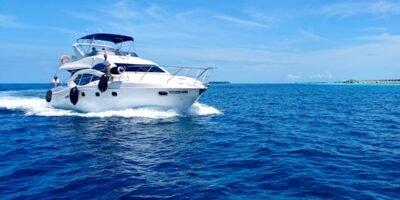Haul of a Boat
Haul of a Boat
Understanding the haul of a boat involves delving into several critical aspects. First, we need to know what this term means. The haul refers to the hull, which is the watertight body of the vessel. It is the most fundamental part of a boat. The hull extends from the stern (rear) to the bow (front).

Types of Hulls
Hull design varies depending on the purpose of the boat. These designs affect the boat’s performance, stability, and buoyancy. Here are the primary types:
- Displacement Hull: Common in larger or slower-moving vessels. It moves through the water by pushing it aside. The shape allows deep water access and a smooth ride.
- Planing Hull: Found on faster boats. It skims across the water surface at high speeds. Typically, these are flat-bottomed or V-shaped, designed for speed and agility.
- Semi-Displacement Hull: This is a hybrid of the two. It offers better speed than a displacement hull but is more stable than a planing hull.
Materials Used
The material used for the hull impacts its durability, maintenance, and cost. Common materials include:
- Wood: Traditional and aesthetically pleasing. Requires regular maintenance to prevent rot and damage.
- Fiberglass: Both strong and lightweight. Requires less maintenance. Easily molded into complex shapes.
- Metal: Usually aluminum or steel. Highly durable and preferred for larger boats. Requires specific maintenance to prevent corrosion.
- Composite: These combine multiple materials to leverage their benefits. They can offer enhanced strength and reduced weight.
Design Considerations
The shape and structure of a boat’s hull determine its handling and suitability for different water conditions. Key design features include:
- Length: Longer hulls generally offer better speed and smoother rides.
- Beam: The width of the hull affects stability. Wider beams provide more stability but can reduce speed.
- Draft: The depth of the hull beneath the waterline. Shallow drafts are ideal for shallow waters while deeper drafts are suited for rougher seas.
- Keel: A structure along the bottom of the hull that adds stability and reduces sideways drift.
Handling Characteristics
How a hull interacts with the water affects the boat’s handling. Considerations include:
- Stability: Determined by hull shape and beam. Affects how the boat resists tipping.
- Buoyancy: Determines how much weight the hull can support. Directly influenced by the hull’s design and volume.
- Drag: Resistance from the water. Less drag means better fuel efficiency and speed.
Common Hull Maintenance
Maintaining a boat’s hull is essential for performance and longevity. Key maintenance tasks are:
- Cleaning: Regular cleaning prevents buildup of algae and marine organisms that can hinder performance.
- Inspections: Regular checks for cracks, blisters, or damage to the hull surface. Early detection prevents costly repairs.
- Painting: Applying anti-fouling paint to prevent marine growth. This extends the hull’s life and maintains speed.
- Repairs: Address any damage promptly. Use appropriate materials and techniques for the hull’s construction.
Environmental Considerations
Environmental factors also play a role in hull design and maintenance. Here are some considerations:
- Saltwater vs. Freshwater: Different water types can affect hull materials differently. Saltwater is more corrosive, requiring additional maintenance.
- Temperature: Extreme temperatures can induce material fatigue. Select materials and coatings that can withstand local conditions.
- Environmental Regulations: Adhere to laws regarding anti-fouling paints and waste disposal to protect marine ecosystems.
“`




Subscribe for Updates
Get the latest articles delivered to your inbox.
We respect your privacy. Unsubscribe anytime.